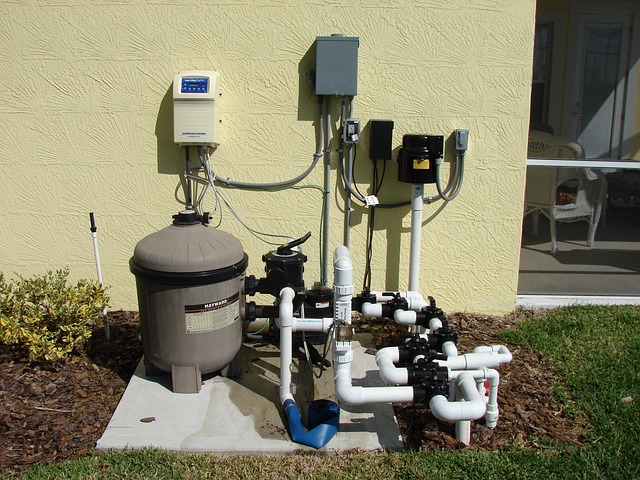Workers’ Compensation: Support That Could Help After a Workplace Injury
Workers’ compensation is an insurance-based system that provides financial and medical support to employees injured while performing their job. Benefits may include coverage for medical treatment, partial wage replacement, and rehabilitation services. While laws vary by state, most employers are required to carry workers’ comp insurance, and filing a claim promptly is crucial.

Understanding Workers’ Compensation Insurance
Workers’ compensation is an insurance-based system that most employers are legally required to maintain. This no-fault insurance program serves dual purposes: protecting employers from lawsuits related to workplace injuries while ensuring injured workers receive necessary medical care and financial support without proving employer negligence. Each state administers its own workers’ compensation program with unique regulations, but the fundamental purpose remains consistent nationwide. The system covers injuries occurring during work hours or while performing job-related duties, including accidents, repetitive stress injuries, occupational illnesses, and in some cases, mental health conditions stemming from workplace incidents.
What Benefits Are Available Through Workers’ Comp?
Workers’ compensation benefits vary by state but typically include several core components designed to support recovery and financial stability. Medical benefits cover necessary treatment related to work injuries, including doctor visits, hospital stays, medications, physical therapy, and medical equipment. Wage replacement benefits provide partial income—usually between 60-70% of your regular wages—while you’re unable to work. For workers with permanent disabilities, benefits may include lump-sum settlements or ongoing payments proportional to the impairment rating. Many programs also provide vocational rehabilitation services to help workers gain new skills if they cannot return to their previous position. Death benefits support dependents of workers who die from job-related incidents, typically covering funeral expenses and providing ongoing financial support.
The Workers’ Compensation Claim Process
Filing a work injury claim in the USA follows a specific timeline and procedure that varies by state but generally includes several universal steps. First, report your injury to your employer immediately—most states have strict notification deadlines ranging from 30-90 days. Seek medical attention promptly, documenting all treatments and following prescribed care protocols. Your employer should provide claim forms and notify their insurance carrier about your injury. After submission, the insurance company investigates and approves or denies your claim—typically within 14-30 days. If approved, you’ll begin receiving benefits; if denied, you have the right to appeal through your state’s workers’ compensation board. Throughout this process, maintain detailed records of all medical treatments, correspondence, and work absences related to your injury.
When to Seek a Workers’ Compensation Attorney
While many straightforward workers’ compensation cases resolve without legal assistance, certain situations warrant consulting a workers’ compensation attorney. Consider legal help if your claim is denied, benefits are delayed, or you receive an inadequate settlement offer that doesn’t cover your needs. Cases involving permanent disabilities or disputes over your ability to work also benefit from professional representation. If your employer retaliates against you for filing a claim—which is illegal in all states—legal counsel becomes essential. Additionally, situations where third-party liability exists alongside your workers’ comp claim, such as when defective equipment caused your injury, may create opportunities for additional compensation beyond standard benefits.
Navigating Workers’ Comp Insurance Requirements
Workers’ compensation insurance requirements vary significantly across jurisdictions, though most states mandate coverage for businesses with employees. Typically, employers must purchase coverage through private insurers or state-run programs, with premiums based on industry risk factors, payroll size, and claim history. Penalties for non-compliance can be severe, including fines, stop-work orders, and potential criminal charges for business owners. Some states provide exemptions for certain business types—such as those with fewer than five employees or specific occupational categories like agricultural workers or independent contractors. However, even exempt employers often voluntarily maintain coverage to protect both their business and their workers from the financial impact of workplace injuries.
Workers’ Compensation Costs and Coverage Comparison
Understanding the financial aspects of workers’ compensation can help employers make informed decisions and help employees understand the value of benefits available to them. Costs and coverage vary significantly depending on location, industry risk factors, and company claim history.
| Insurance Provider | Average Cost Per Employee | Industries Covered | Notable Features |
|---|---|---|---|
| The Hartford | $560-$2,000 annually | Most industries, specializing in small business | Return-to-work programs, pay-as-you-go options |
| Travelers | $520-$1,800 annually | Wide coverage with industry specializations | Risk management tools, industry-specific safety programs |
| Liberty Mutual | $600-$2,200 annually | Comprehensive coverage across sectors | Dedicated claim managers, extensive rehabilitation support |
| State Funds | $400-$1,500 annually | Varies by state | Often the insurer of last resort, competitive rates |
| Self-Insurance | Variable based on company size | Large employers with strong financial positions | Direct claim management, potential long-term savings |
Prices, rates, or cost estimates mentioned in this article are based on the latest available information but may change over time. Independent research is advised before making financial decisions.
The Future of Workers’ Compensation
Workers’ compensation continues to evolve to address changing workplace dynamics and emerging challenges. The rise of remote work has complicated determinations of work-related injuries, prompting insurers and regulators to develop new guidelines for home office environments. Technological advances are streamlining claim processing through digital reporting systems and telemedicine options that improve access to care. Meanwhile, many states are reforming their systems to better address mental health conditions like PTSD and workplace stress, which traditionally received limited coverage. As the nature of work continues to change, workers’ compensation systems across the country are adapting to maintain their core mission: protecting employees and employers from the financial impacts of workplace injuries while promoting safe work environments.




